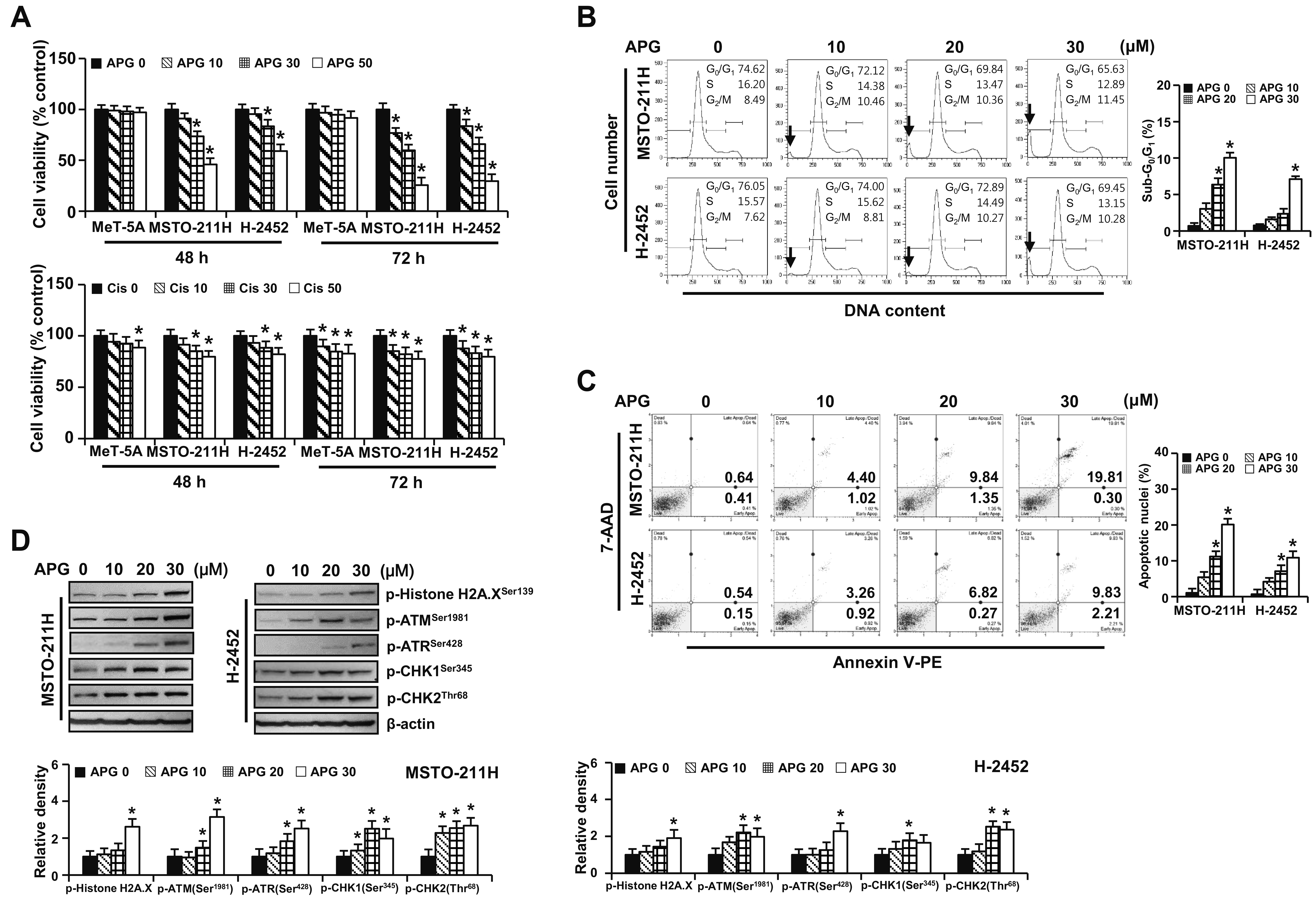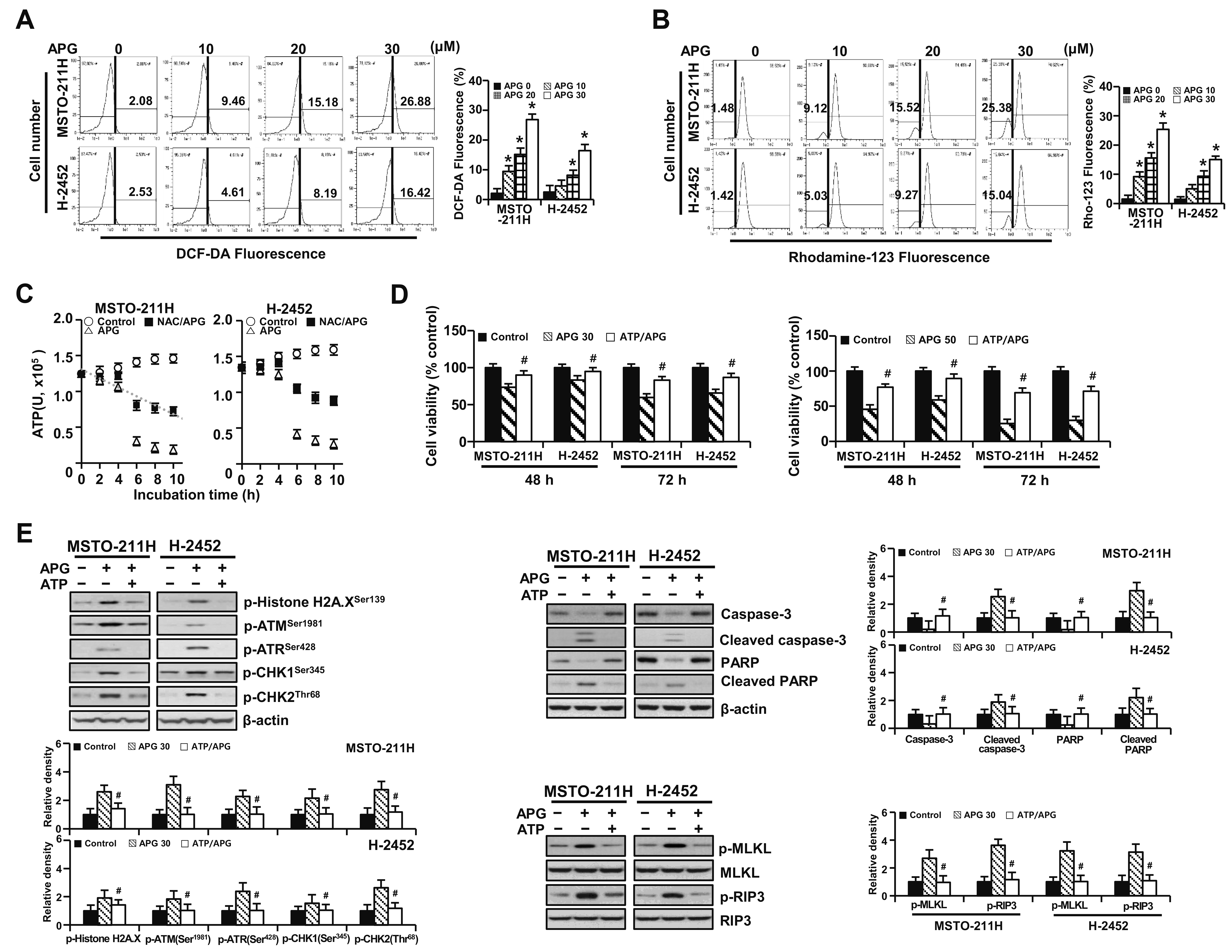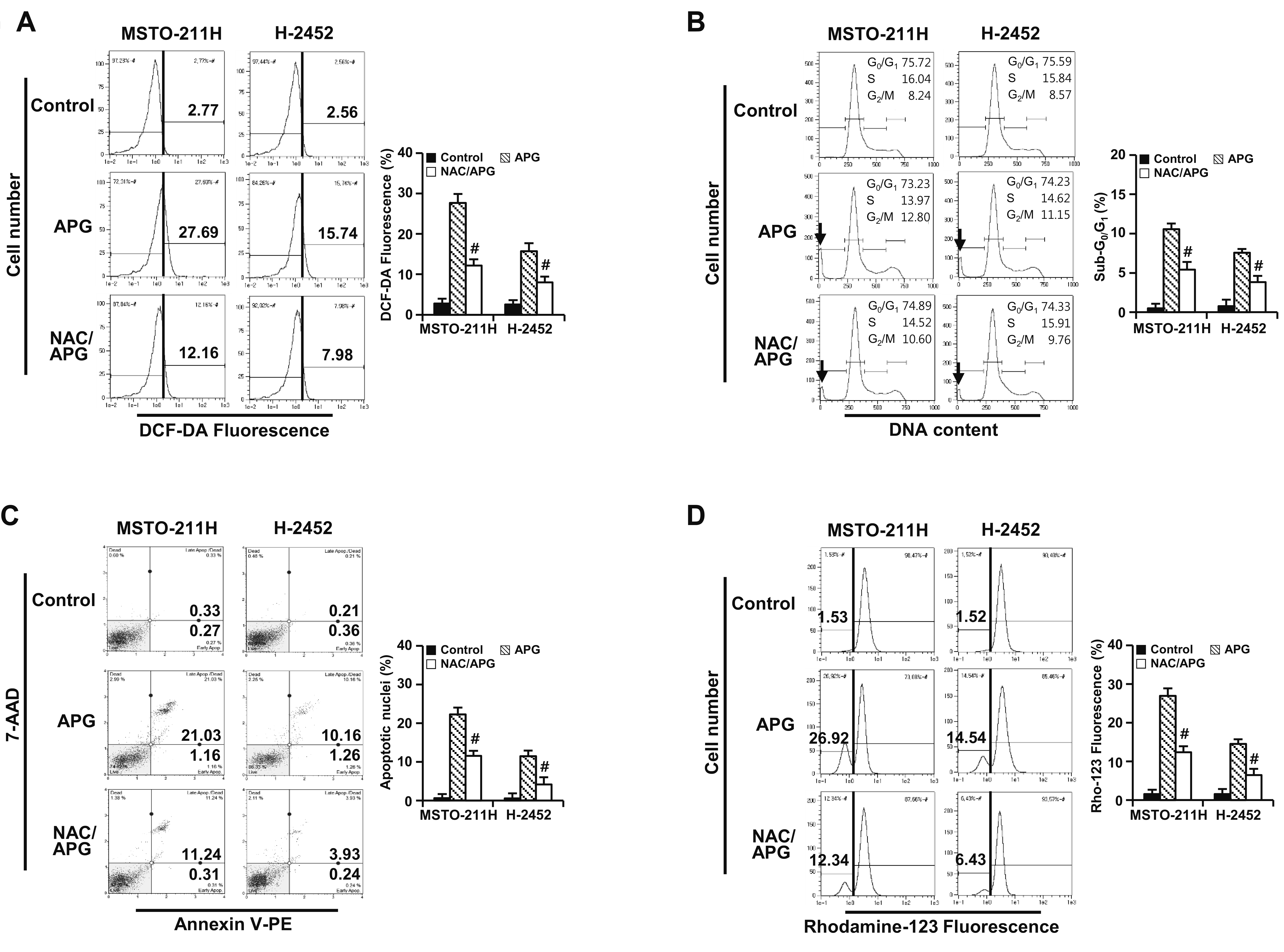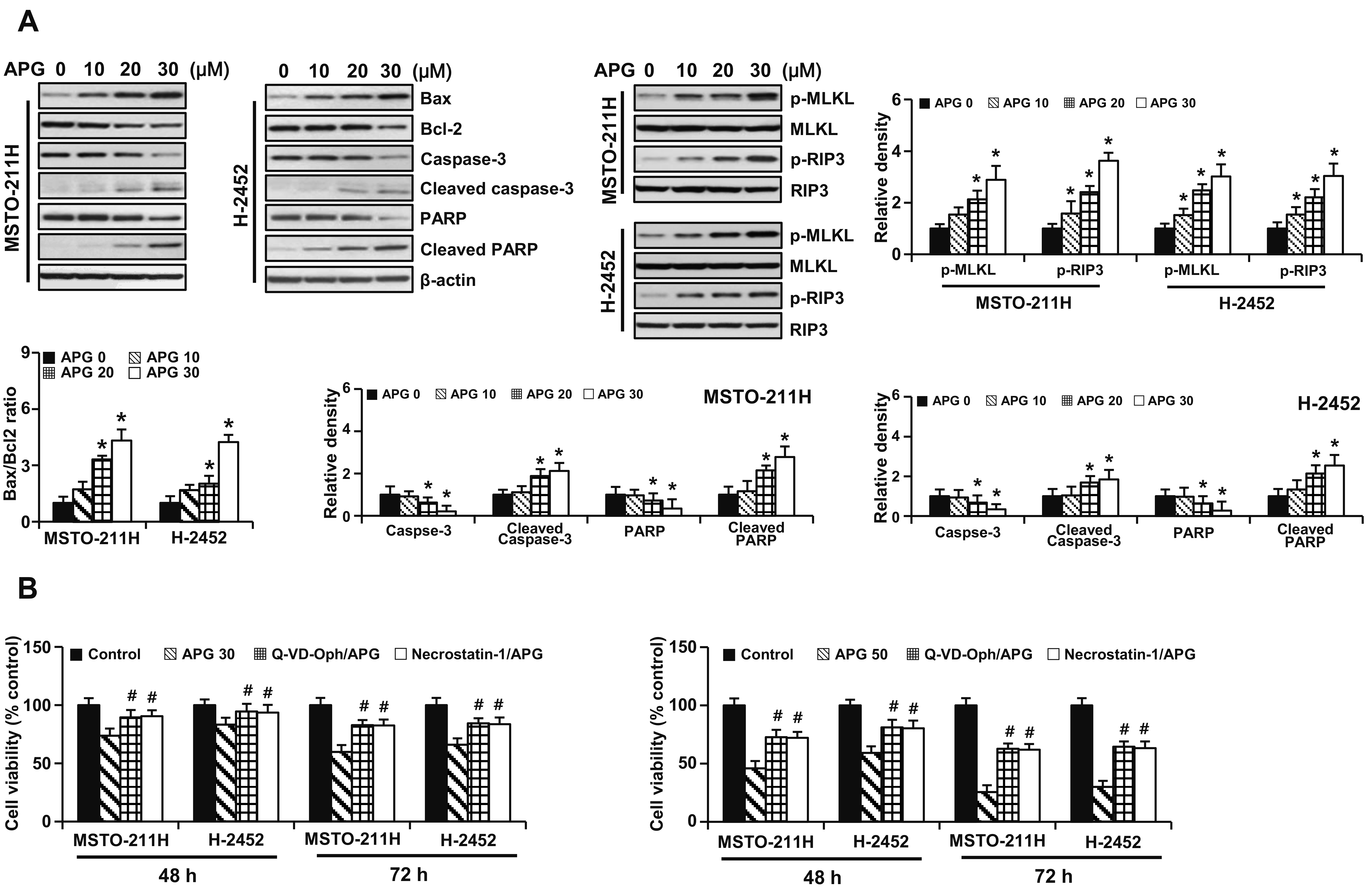INTRODUCTION
METHODS
Reagents and cell culture
Cell viability assay
 | Fig. 1Apigenin-induced cytotoxicity.Two MM cell lines, MSTO-211H and H-2452, and normal mesothelial cell line MeT-5A were treated with increasing concentrations (0, 10, 30, and 50 μM) of apigenin or cisplatin for 48 h and 72 h. (A) Cell viability was measured by MTT assay. (B) Cell cycle distribution was determined by flow cytometry following staining with propidium iodide (20 μg/ml). (C) Apoptotic cell fraction was analyzed using annexin V-PE binding assay. (D) Levels of DNA damage response proteins were assessed by Western blotting. MM, malignant mesothelioma; APG, apigenin; 7-AAD, 7-amino-actinomycin D; Arrows, sub-G0/G1 peak. *p < 0.05 vs. respective control group.
|
Cell cycle analysis
Annexin V-PE binding assay
Western blot analysis
Measurement of ROS and mitochondrial membrane potential
 | Fig. 3Effects of apigenin on mitochondrial function in MSTO-211H and H-2452 cells.(A, B) Cells were treated with indicated concentrations of apigenin for 48 h. Intracellular ROS levels were measured after cells were stained with 10 μM DCF-DA (A). Mitochondrial membrane potential was measured after staining cells with 30 nM rhodamine123 (B). (C–E) Cells were pretreated with 5 mM NAC or 1 mM ATP for 2 h prior to treatment with 30 μM apigenin for 48 h. Cellular ATP levels were measured by CellTiter-Glo luminescent cell viability assay (C). Cell viability was measured by MTT assay (D). Levels of DNA damage response-, apoptosis-, and necroptosis-related proteins were assessed by Western blotting (E). APG, apigenin; NAC, N-acetylcysteine; ROS, reactive oxygen species. *p < 0.05 vs. respective control group. #p < 0.05 vs. group treated with APG alone.
|
 | Fig. 4Apigenin-induced oxidative stress in MSTO-211H and H-2452 cells.Cells were pretreated with or without 5 mM NAC for 2 h prior to treatment with 30 μM apigenin for 48 h. (A) Cellular ROS levels were measured by staining cells with 10 μM DCF-DA. (B) Cell cycle distribution was determined by flow cytometry following staining with propidium iodide (20 μg/ml). (C) Apoptotic cell fraction was analyzed using annexin V-PE binding assay. (D) ΔΨm was measured by staining cells with 30 nM rhodamine123. APG, apigenin; NAC, N-acetylcysteine; Arrows, sub-G0/G1 peak. #p < 0.05 vs. group treated with APG alone.
|
Measurement of intracellular ATP level
Spheroid culture and viability assay
Spheroid staining
Statistical analysis
RESULTS
DNA damage, transitional delay at G2/M phase, and cell death in apigenin-induced cytotoxicity
Apigenin-induced cytotoxicity accompanies concurrent induction of apoptosis and necroptosis
 | Fig. 2Apigenin-induced apoptosis and necroptosis in MSTO-211H and H-2452 cells.(A) Cells were treated with increasing concentrations (0, 10, 30, and 50 μM) of apigenin for 48 h. Levels of apoptosis- and necroptosis-related proteins were assessed by Western blotting. (B) Cells were pretreated with 25 μM necrostatin-1 and 10 μM Q-VD-Oph-1 2 h prior to treatment with apigenin (30 and 50 μM) for 48 h and 72 h. Cell viability was measured by MTT assay. APG, apigenin. *p < 0.05 vs. respective control group. #p < 0 .05 vs. group treated with APG alone.
|
ROS and ATP play critical roles in apigenin-induced cytotoxicity
 | Fig. 5Effects of pretreatment with N-acetylcysteine on apigenin-induced cytotoxicity in 3D cultures of MSTO-211H and H-2452 cells.Spheroids were cultured in ultralow cluster 96-well plate and pretreated with or without 5 mM NAC 2 h prior to treatment with 30 μM apigenin for 48 h. (A) Vitality staining of spheroids (from left to right: phase-contrast image [a], fluorescent images of FDA(+) living cells in green [b], PI(+) dead cells in red [c], and merged [d]) (×100). (B) Cell and spheroid viability were measured by MTT assay and the enhanced cell viability assay kit. (C) The levels of necroptosis- and apoptosis-related proteins were analyzed by Western blotting. APG, apigenin; NAC, N-acetylcysteine. *p < 0.05 vs. respective control group. #p < 0.05 vs. group treated with APG alone.
|




 PDF
PDF Citation
Citation Print
Print


 XML Download
XML Download